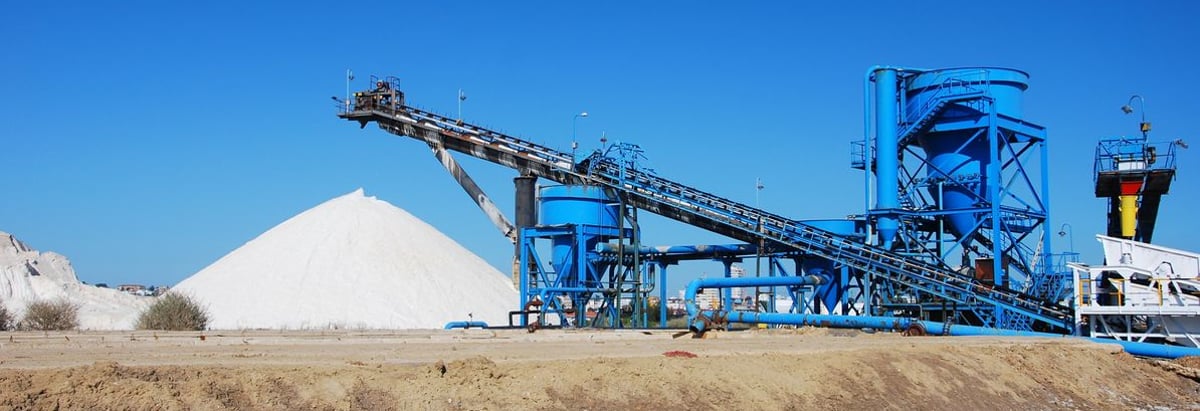
If you are looking to invest in Vision Lithium Inc’s (TSXV:VLI), or currently own the stock, then you need to understand its beta in order to understand how it can affect the risk of your portfolio. Broadly speaking, there are two types of risk you should consider when investing in stocks such as VLI. The first risk to think about is company-specific, which can be diversified away by investing in other companies in order to lower your exposure to one particular stock. The second risk is market-wide, which arises from investing in the stock market. This risk reflects changes in economic and political factors that affects all stocks.
Not all stocks are expose to the same level of market risk. The most widely used metric to quantify a stock's market risk is beta, and the market as a whole represents a beta of one. Any stock with a beta of greater than one is considered more volatile than the market, and those with a beta less than one is generally less volatile.
View our latest analysis for Vision LithiumWhat does VLI's beta value mean?
Vision Lithium’s beta of 0.19 indicates that the company is less volatile relative to the diversified market portfolio. This means the stock is more defensive against the ups and downs of a stock market, moving by less than the entire market index in times of change. Based on this beta value, VLI appears to be a stock that an investor with a high-beta portfolio would look for to reduce risk exposure to the market.
Does VLI's size and industry impact the expected beta?
With a market cap of CA$39.47M, VLI falls within the small-cap spectrum of stocks, which are found to experience higher relative risk compared to larger companies. Moreover, VLI’s industry, metals and mining, is considered to be cyclical, which means it is more volatile than the market over the economic cycle. Therefore, investors may expect high beta associated with small companies, as well as those operating in the metals and mining industry, relative to those more well-established firms in a more defensive industry. It seems as though there is an inconsistency in risks portrayed by VLI’s size and industry relative to its actual beta value. A potential driver of this variance can be a fundamental factor, which we will take a look at next.
Is VLI's cost structure indicative of a high beta?
During times of economic downturn, low demand may cause companies to readjust production of their goods and services. It is more difficult for companies to lower their cost, if the majority of these costs are generated by fixed assets. Therefore, this is a type of risk which is associated with higher beta. I test VLI’s ratio of fixed assets to total assets in order to determine how high the risk is associated with this type of constraint. VLI's fixed assets to total assets ratio of higher than 30% shows that the company uses up a big chunk of its capital on assets that are hard to scale up or down in short notice. As a result, this aspect of VLI indicates a higher beta than a similar size company with a lower portion of fixed assets on their balance sheet. However, this is the opposite to what VLI’s actual beta value suggests, which is lower stock volatility relative to the market.
What this means for you:
You could benefit from lower risk during times of economic decline by holding onto VLI. Take into account your portfolio sensitivity to the market before you invest in the stock, as well as where we are in the current economic cycle. Depending on the composition of your portfolio, VLI may be a valuable stock to hold onto in order to cushion the impact of a downturn. What I have not mentioned in my article here are important company-specific fundamentals such as Vision Lithium’s financial health and performance track record. I highly recommend you to complete your research by taking a look at the following:
- Financial Health: Is VLI’s operations financially sustainable? Balance sheets can be hard to analyze, which is why we’ve done it for you. Check out our financial health checks here.
- Past Track Record: Has VLI been consistently performing well irrespective of the ups and downs in the market? Go into more detail in the past performance analysis and take a look at the free visual representations of VLI's historicals for more clarity.
- Other High-Performing Stocks: Are there other stocks that provide better prospects with proven track records? Explore our free list of these great stocks here.
New: Manage All Your Stock Portfolios in One Place
We've created the ultimate portfolio companion for stock investors, and it's free.
• Connect an unlimited number of Portfolios and see your total in one currency
• Be alerted to new Warning Signs or Risks via email or mobile
• Track the Fair Value of your stocks
Have feedback on this article? Concerned about the content? Get in touch with us directly. Alternatively, email editorial-team@simplywallst.com
Simply Wall St analyst Simply Wall St and Simply Wall St have no position in any of the companies mentioned. This article is general in nature. We provide commentary based on historical data and analyst forecasts only using an unbiased methodology and our articles are not intended to be financial advice. It does not constitute a recommendation to buy or sell any stock and does not take account of your objectives, or your financial situation. We aim to bring you long-term focused analysis driven by fundamental data. Note that our analysis may not factor in the latest price-sensitive company announcements or qualitative material.
About TSXV:VLI
Vision Lithium
Engages in the mineral resource exploration activities in Canada.
Adequate balance sheet slight.
Market Insights
Community Narratives



